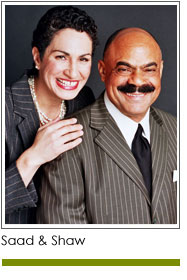 Will hiring a fundraising professional solve your fundraising challenges? Is it your secret wish that someone will take care of fundraising so you can focus on the “more important” work of your nonprofit? Perhaps you seek a million dollar bequest from an unknown admirer.
Will hiring a fundraising professional solve your fundraising challenges? Is it your secret wish that someone will take care of fundraising so you can focus on the “more important” work of your nonprofit? Perhaps you seek a million dollar bequest from an unknown admirer.
Here’s the real secret to sustained fundraising success: create and support a fundraising team that meets regularly and “owns” your fundraising. That’s it. You can’t do it on your own. No one person can solve all your challenges. You have to build and grow a team that includes your volunteers, staff, executive leadership and board members. Your team should be comprised of leaders who are committed to ensuring your nonprofit has the money and resources it needs to deliver on its mission.
Here are the benefits. A fundraising leadership team helps create accountability and transparency. Members are accountable to each other. Each member knows the commitments, roles, and responsibilities of all other members. There are no secrets. If there is a lull in gifts received, the full team knows about it. When new gifts are received, members know about it. When fundraising management reports are shared at each meeting, team members can monitor the progress of fundraising activities, ask pertinent questions, and work with each other to create new strategies and work-arounds.
Your team should meet on a regular basis to report progress and challenges. Members should work collaboratively to help your organization reach its fundraising goal. They should be empowered to make decisions, and the decisions made by this team should be respected and implemented by fundraising volunteers and employees.
With a strong fundraising leadership team, the actions of staff, board members, and volunteers are open to review by team members. Financial progress and expenses are reported regularly at these meetings. Members have the opportunity to share information and coordinate their activities.
When you have engaged qualified volunteers to assist with fundraising, you will be amazed at the solutions they come up with. The key to an effective fundraising leadership team is for it to be volunteer-led with support from staff. That means the fundraising chair leads the team meetings, not the executive director or chief development officer. It means that staff support the work of the fundraising chair by producing and distributing fundraising reports and taking and quickly distributing minutes that accurately capture action items and next steps. If you have selected a qualified fundraising chair and clearly defined his responsibilities, you will be amazed how he can assist you in meeting your goals. He can do this because he has made them his goals. He is no longer helping your organization; he is now orchestrating and attracting people and resources for something he believes in.
Next week: team membership and meetings
Excerpted from “Prerequisites for Fundraising Success” a new book from Mel and Pearl Shaw, available from Amazon.com. They provide fundraising counsel to nonprofits.
This is the first of a two-part series. © Mel and Pearl Shaw











